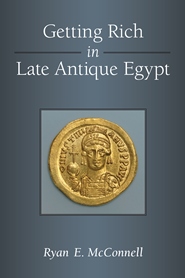| Main » Ad Board » ДРЕВЕН ЕГИПЕТ И АФРИКА » Икономика, стопанство и търговия |
Ryan E. McConnell - Getting Rich in Late Antique Egypt
| 30.06.2020, 15:11 | |
Монографията проследява възхода на "фамилията на Апион" - едри египетски латифундисти през периода на Късната Античност. Анализира се източникът на тяхното благосъстояние - събирането на данъци от името на държавното съкровище и ролята на техните имения в общата стопанска структура на Източната Римска империя през V-VII в. - на английски език, от MEGA, формат PDF.Сваляне с ляв бутон (downloading by left button) и после през бутона Download. АЛТЕРНАТИВЕН ЛИНК / ALTERNATIVE LINK: - на английски език, от Google Drive,формат PDF. Сваляне с ляв бутон (downloading by left button) от страницата на предоставящия сървър, после през бутона стрелка надолу/after by down arrow button.
| |
| Views: 474 | Placed till: 30.07.2020 | Rating: 0.0/0 | |

